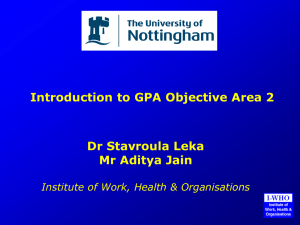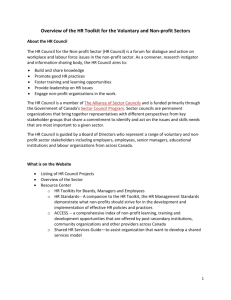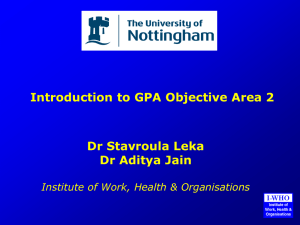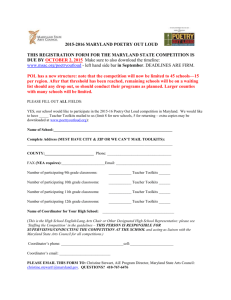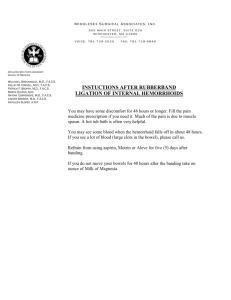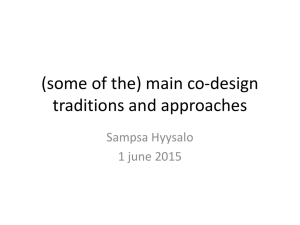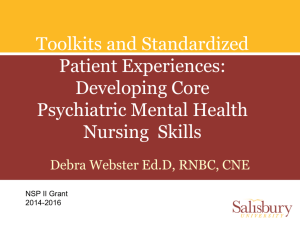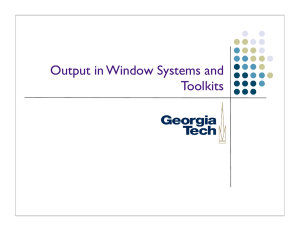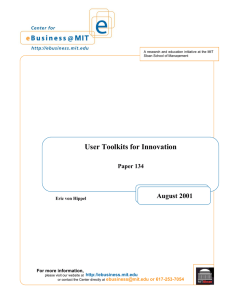WHO Global Network of Collaborating Centers in Occupational Health Working Group
advertisement
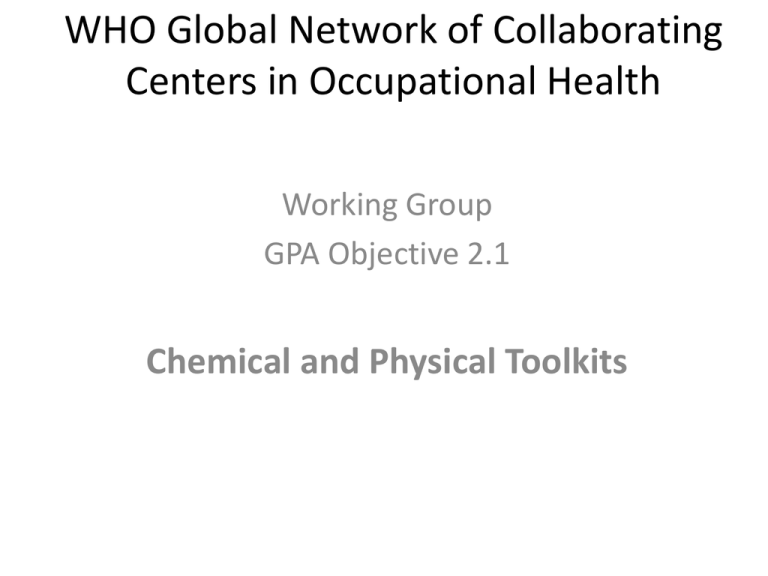
WHO Global Network of Collaborating Centers in Occupational Health Working Group GPA Objective 2.1 Chemical and Physical Toolkits 2012 Outcomes anticipated from current work • • • • Training and technical assistance through workshops. Web-based toolkits developed in multiple countries. COSHH Essentials translated into Chinese. Web available instructor-based training courses, and materials with culturally appropriate chemical control banding approaches. • Inclusion of control banding principles and approaches in standards and legislation of range of countries. • Networks of stakeholders in who interact via International Control Banding Workshops via International Occupational Hygiene Association meeting. • Update ICCT to include all of the current toolkits. 2012 Outcomes anticipated from current work • Common educated approach and (IOHA) draft a document to manage the tools and determine which is the best one to use. Suggestions of which to use. • IOHA to draft a document on managing the toolkits available to suggest how to select appropriate toolkit and how to manage its use. • Develop and submit SAICM applications • Work with the local colleagues and adapt the materials to the local situations so that they are more readily accepted. (Denmark-Bolivia). • ILO/WHO influence ministries to pass safety and health laws. Critical Gaps to be filled by 2012 • Electronic resource library for control banding to share tools, training, legislation, etc. (www.geolibrary.org) • Engage in communication with regulators because without legal mandates control banding is difficult to sustain. • Implementation, evaluation, translation, and modification of toolkits for use in local situations and SMEs. • Provide a general framework on of toolkits, including the purpose, and application/applicability; this should be available on the internet for proper networking, dissemination and flexibility. • Form active network of toolkit experts to enhance communication and collaboration. • Collaborate with GPA 3.2 and IOHA to increase training of occupational hygienists and to include Control Banding approaches in their training. • Train BOHS personnel are trained on the use of toolkits to reduce exposures in workplaces. • Collaborate with the various sectors (eg. Construction, health care etc) to encourage inclusion of simple guidance approaches. Deliverables for 2016 • Evaluate cost-effectiveness of practical tools. • Promote the toolkit approach using work-related disease indicators do examine the reduction of disease. (Improve the indicators or find where the indicators have been measured already.) • Provide for governments assessments of the economic benefit of using practical toolkits. • Integrate toolkits addressed at physical, chemical, ergonomic, and psychosocial hazards to be able to address multiple hazards at workplaces holistically. • In the development of web-based tools, develop them at different levels starting from the beginning (introduction/simple toolkit) and have a more advanced level. • Conduct workshop for inspectors (international association of labor inspectors) to show to them that Toolkits work.


